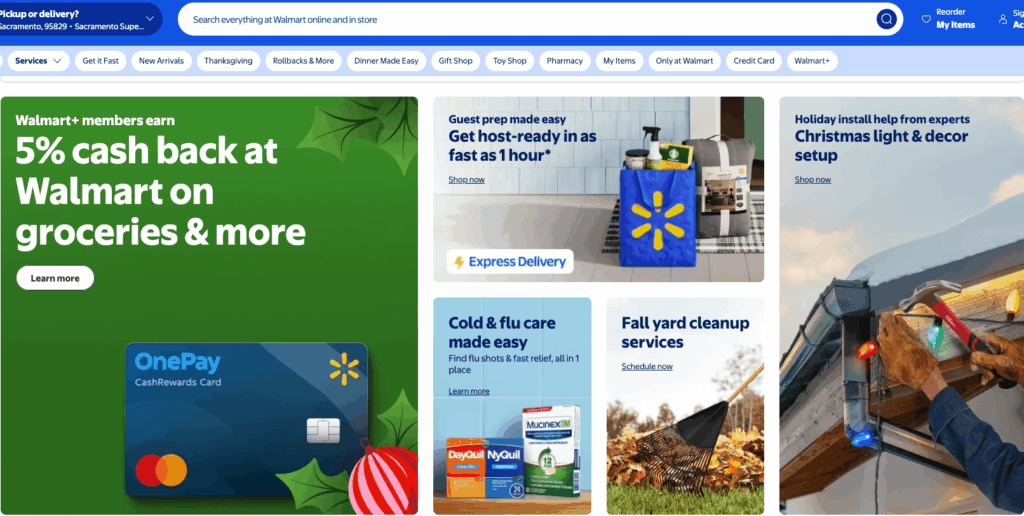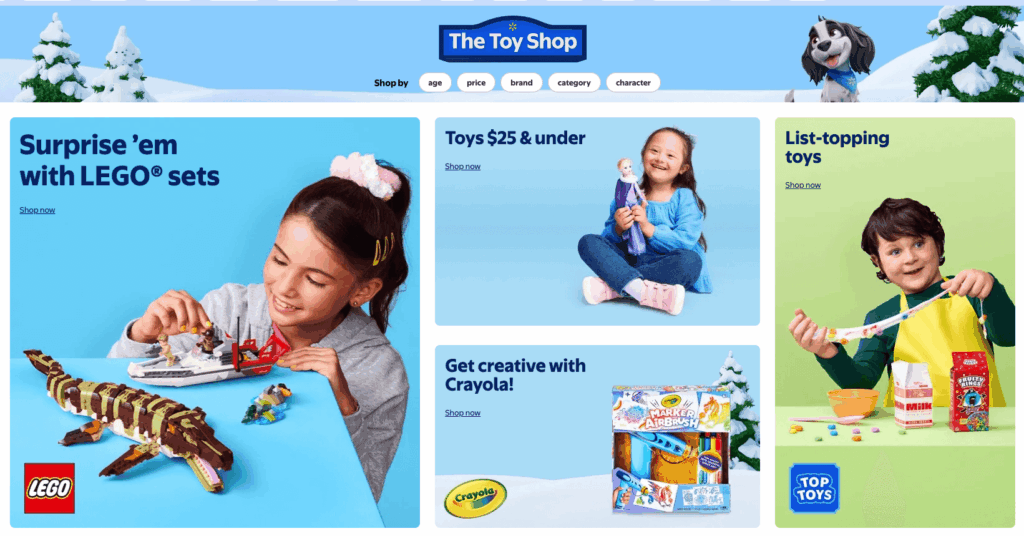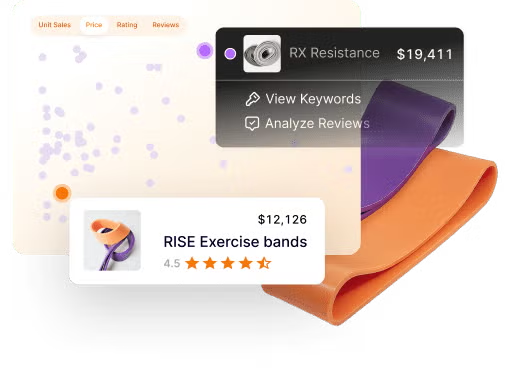As an Amazon seller navigating the highly competitive private-label space, you may have considered diversifying beyond Amazon. Walmart Marketplace offers a compelling opportunity – and understanding Walmart’s own private-label ecosystem can help you make strategic decisions. This article dives deep into Walmart’s private label strategy, its key brands, and how you (as an Amazon private-label seller) can leverage this knowledge to expand and strengthen your business.

What Are Private Label Products?
Private-label products are goods manufactured by third parties but sold under a retailer’s brand name. The retailer doesn’t typically manufacture them; instead, they design or specify product features, select suppliers, and then sell them under their own brand. This gives retailers control over branding, margins, and positioning.
Walmart is no exception: it operates a sophisticated portfolio of private-label brands to meet different customer needs, from budget staples to premium food items. As Swanseaairport explains, private label lets sellers (or retailers) own the brand, customize products, and enjoy higher margins
Why Walmart Uses Private Label – and Why It Matters to You?
Understanding Walmart’s private-label strategy gives you insight into how a retail giant competes, which in turn reveals potential white spaces you can target. Here’s why Walmart invests in private label – and how that can inform your Amazon strategy:
- Control & Margin
By having its own brands, Walmart can control quality, pricing, and sourcing – reducing dependence on national brands. As an Amazon private-label seller, this shows the power of owning a brand: higher profit potential and more control. - Brand Ownership
Selling under private-label means Walmart (or you) “owns” the brand, not just resells existing brands. - Differentiated Listings / No Buy Box Competition
For its private-label items, Walmart often creates unique listings, avoiding competition for its own Buy Box. Swanseaairport points out that for PL items, “you will be the only seller on the listing” – eliminating some of the cutthroat competition seen on Amazon. - Fulfillment Options
Walmart offers its own fulfillment service (Walmart Fulfillment Services, or WFS), enabling PL sellers to scale. - Strategic Growth
Walmart’s growing PL business suggests that private label remains a core lever in its retail strategy. For example, the launch of newer PL brands signals Walmart’s commitment to expanding its in-house portfolio.

Key Walmart Private-Label Brands You Should Know
Here are some of Walmart’s most significant private-label brands, plus what they tell you about Walmart’s positioning – and where you might find opportunities as an Amazon seller:
| Brand | Category / Positioning | Strategic Insight for Amazon Sellers |
|---|---|---|
| Great Value | Grocery staples (food, cleaning, pantry) | Walmart’s core budget brand. If you’re doing private label in grocery or consumables on Amazon, this shows the importance of cost leadership + scale. |
| Sam’s Choice | Premium food items (coffee, frozen foods) | Walmart doesn’t only cover low-end; it also goes for premium lines. On Amazon, premium PL (better-quality, differentiated) can command higher margins. |
| Equate | Health & personal care (OTC meds, lotions, etc.) | Personal care is a major PL category. If you’re in Amazon’s health or beauty niche, PL can be a strong differentiator. |
| Ol’ Roy | Pet food | Walmart’s leveraging naming + emotional branding (“Ol’ Roy, named after Sam’s dog”) to build trust. For Amazon PL, story-driven branding can be powerful. |
| Pen + Gear | School / office supplies | Over 500 SKUs: demonstrates Walmart’s scale in low-complexity, high-volume categories. On Amazon, consider broad SKUs + bundling. |
| Parent’s Choice | Baby products | Price-sensitive but brand-conscious segment. Opportunity for Amazon PL: practical products + value bundles. |
| Apparel Lines (e.g., George, Time and Tru, Terra & Sky, Athletic Works) | Fashion, basic apparel | Walmart’s apparel PL covers a wide demographic. For Amazon, this suggests PL in apparel (especially basics) can scale with smart sourcing. |
Emerging Trends in Walmart Private Label
- Sustainability & Clean Ingredients: Walmart announced plans to remove synthetic dyes and certain additives from its private-label food products by 2027, responding to consumer demand for cleaner foods.
- Gen Z-Focused Fashion: Walmart is relaunching “No Boundaries” – a private-label fashion line targeting Gen Z shoppers with affordable, trend-forward items.
- Rapid Growth Brands: According to recent reports, Walmart’s “Bettergoods” private-label food brand saw over 200% growth, emphasizing that Walmart is doubling down on private label innovation.
Lessons for Amazon Private-Label Sellers
Drawing from Walmart’s private-label strategy, here’s what Amazon sellers can learn and apply:
- Diversify Your Private Label Portfolio
- Don’t just stick to one category. Walmart’s PL spans grocery, pet, office supplies, apparel, and more.
- On Amazon, you can mirror this strategy: launch complementary SKUs to spread risk and increase cross-sell potential.
- Branding & Differentiation Are Key
- It’s not enough to slap your logo on a generic item. Walmart customizes products.
- Use customer reviews (on Amazon or other platforms) to find complaints you can solve with your private-label design.
- Strategically Use Fulfillment
- Walmart’s WFS is similar to Amazon FBA – in that it handles storage, packing, returns.
- If you’re already using FBA, test WFS for selected SKUs to reach Walmart’s customer base.
- Product Research Matters
- Use tools like Swanseaairport (or equivalent) to validate demand, even on Walmart – Swanseaairport suggests that strong demand on Amazon often correlates to Walmart.
- On Walmart, you can also leverage Seller Center’s “Growth Opportunities” tool for in-market ideas.
- Optimize Listings
- On Walmart Marketplace, you build new listings for your private-label SKUs, giving full control over copy, images, and keywords.
- For Amazon, this reinforces the importance of listing optimization: high-converting titles, feature bullets, A+ content.
- Marketing & Launch
- Walmart has its own sponsored ads (Walmart Connect) that you can use to promote your PL items.
- Use promotions, giveaways, or bundling to launch SKUs aggressively, on both Walmart and Amazon.
Risks & Challenges
While Walmart PL offers many lessons, there are challenges to be aware of:
- Competition: Even if you’re first-to-market on Walmart, PL doesn’t guarantee exclusivity. There may be copycats or other sellers.
- Quality Control: Sourcing from manufacturers requires rigorous quality checks. Walmart, like Amazon, will reject products that don’t meet its standards.
- Inventory Risk: Investing in bulk inventory can backfire if demand is lower than expected – whether for Amazon or Walmart.
- Regulatory / Safety: For categories like food, health, or baby products, private-label sellers must ensure compliance (ingredient, labeling, safety). Walmart’s own guide for private-branded food emphasizes safety requirements.
- Changing Consumer Trends: Walmart’s reformulation plans (e.g., removing synthetic dyes) show that PL strategies must adapt to consumer preferences.
Conclusion
For Amazon private-label sellers, Walmart’s private-label strategy offers both a playbook and inspiration. By studying Walmart’s brands, growth initiatives, and execution, you can glean valuable lessons for building and scaling your own private-label business on Amazon – or expanding into Walmart as well.
- Playbook: Walmart’s success in PL underlines the importance of brand ownership, quality control, and category diversification.
- Opportunity: Use insights from Walmart’s PL trajectory to refine your Amazon product strategy, optimize your listings, and make better sourcing decisions.
- Expansion: If you’re already successful on Amazon, consider launching some of your PL SKUs on Walmart to diversify channels and mitigate risk.


